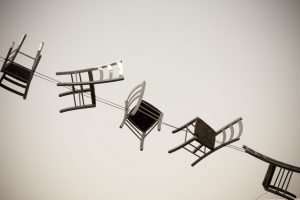As an artist and designer, there are some things you wish you could learn or understand that people just never talk about. Things like how to make your art better, how to make your art stand out, how to be more creative, or how to market your art. This blog will help fill in these gaps and hopefully help you with your own artwork.
The Do’s and Don’ts of Art will be an ongoing series helping new artists find their feet and develop their skills as well as having a resource for experienced artists to refer back to.
Art is a skill and an art. We all have an innate ability to create art. Whether you are writing, drawing, or creating music. Even if we don’t realize it, we all create art every day. The only difference is that some of us are better at it than others.
Art is a skill in which you can always improve, but the key to improving your skill is to practice. This blog post will give you tips on the do’s and don’ts of art and hopefully help you improve your own artwork.
The Do’s:
1.) Draw everyday: Even if you don’t feel like it, or even if you don’t want to draw. If you want to improve your artwork, then drawing everyday will get you there faster than not drawing at all. Drawing everyday isn’t just about drawing; it’s about doing something creative everyday, whether it be music, dancing, writing poetry/fiction/non-fiction, painting…whatever. Creativity is good for the soul (and also good for developing new ideas).
2.) Practice: If you want to get better at art then practice is the key to getting there faster than someone who doesn’t
The Do’s and Don’ts of Art
Art is an ongoing process of trial and error. You can’t get better if you don’t make mistakes. But, as often happens in life, the faster you learn from your mistakes, the less they will slow you down. To help you avoid common pitfalls, here are some of the most important Do’s and Don’ts of art:
Don’t expect to be brilliant right away. It takes time to learn to draw and paint well, but it is never too late to start.
Do have fun with art! It can be hard at times, but remember that practice improves your skill and enhances your joy.
Don’t try to force yourself into a style or medium that doesn’t come naturally. If you work in a style or medium that comes easily to you, you will enjoy it more and be more successful in it.
Do hold on to old drawings and paintings that you do not think are good enough for anyone else to see. They are valuable sources of information about what works for you and what doesn’t, about the mistakes you make over and over again, about what is easy for you and what is hard for you, about what was fun for you in previous media or styles.*
Do clean
We’ve all been there, either in school or practicing as an artist. You’re trying to create a piece of art and you just can’t get it right. The ideas aren’t flowing, nothing seems right, and even if you do finish a piece, it doesn’t look like you had imagined it would. That’s when you experience art block.
Art blocks are really frustrating. It can take weeks to complete a piece of work if you have art block, but hopefully these tips will help you get past them and create your masterpieces with ease!
So what’s the first tip?
The art world can be a very intimidating place to try and navigate. However, there are plenty of steps you can take to help improve your chances at success. You may not know what exactly you’re doing, but you will certainly feel better about yourself and your work if you are following the advice that is presented in this article.
The following article gives you tips on how to make your artwork look professional by providing examples of what not to do, as well as suggestions on how to make your work look more appealing.
Art Block is a term used to describe the lack of inspiration or motivation an artist experiences. Not to be confused with writer’s block. It is also sometimes referred to as an artist’s slump.
The causes of art block vary from artist to artist but generally it can be caused by stress, anxiety, depression, perfectionism, self-criticism, lack of confidence and other external factors such as too many distracting elements around you.
There are a number of suggestions for how to get over art block and I have compiled some of them here in this article along with my own personal suggestions.
Are you suffering from Art Block? Here are some tips on how to get over it!



